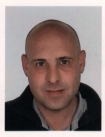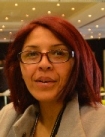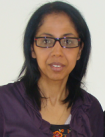Politics
Spanish regions rebel and add 11,300 more deaths than the officials
Because of the Coronavirus
USPA NEWS -
Are the information from governments on the Coronavirus pandemic reliable? Are the numbers of infected and deceased real? In Spain, more and more people believe not. And not only the citizens but also and above all, the regional governments, which criticize the Spanish Government because it only considers victims of COVID-19 to be those who died in hospitals. Regions such as Madrid and Catalonia, which host the two main cities in Spain, Madrid and Barcelona, and count the greatest number of sick and deceased, have begun to count their victims of the pandemic themselves.
In Spain, official data speak of 182,816 confirmed cases, 19,130 deaths and 74,797 cured. For three days, the numbers of new infected have risen again, as well as the numbers of deceased. The Spanish Government blames this on the generalization of tests among the population and, especially, in nursing homes and care centers. Teams of doctors and nurses from all hospitals in Spain travel to these centers to draw blood from workers and residents, in order to analyze it and check if they have the Coronavirus and are asymptomatic. The final purpose is to prepare as complete a statistic as possible about the spread of the virus in Spain.
But the measure is late. As on so many other occasions since the state of alarm was decreed in Spain, the Government makes decisions in tow, contradicts itself and reveals a disunity that, far from helping, harms the millions of citizens who expect their leaders to successful crisis management. Furthermore, the regions are increasingly confronted with the Government of Spain. Only Madrid and Catalonia add 11,300 more deaths than the official statistics of the Ministry of Health say. These two regions decided to count the deceased among the dead in nursing homes, in care centers and in their own homes.
Other regions follow in the footsteps of Madrid and Catalonia. The work is enormous: in an aging society, like the Spanish one, there are many nursing homes to visit. And there are also many care centers. USPA News accompanied a team of nurses from the San Pedro of Logroño hospital, capital of the Rioja wine region (north of the country), to the CAPDP of Fuenmayor, a municipality near the Riojan capital, where psychic disabled people live, study and work. They also had blood drawn to analyze if they have Coronavirus. COVID-19 has disrupted the plans of these centers and altered their daily routine.
Some regions such as Madrid are already studying the possibility of gradually opening classrooms. This week, the Spanish Government and the education counselors from the 17 regions agreed that this course should end with a general pass, except in extreme cases, at least in Early Childhood, Primary and Secondary Education. Madrid proposed opening the schools in July with reinforcement classes and other counselors were willing to support the measure. It is more difficult to establish a knowledge recovery plan at the University, since university students do internships in companies and receive an education oriented to the world of work.
The debate on education is just one more than those that are registered these days, when the Spanish Government studies the transition towards normality. It is taken for granted that the confinement of the Spanish will continue again, until May 11. The Minister of Health, Salvador Illa, warned on Thursday that the circumstances to lift the confinement still do not exist and pointed out that, in any case, the return to normality will not be complete because measures such as the obligation to wear a mask and gloves, or the maintenance of social distance, will have to be maintained for a long time.
Liability for this article lies with the author, who also holds the copyright. Editorial content from USPA may be quoted on other websites as long as the quote comprises no more than 5% of the entire text, is marked as such and the source is named (via hyperlink).






